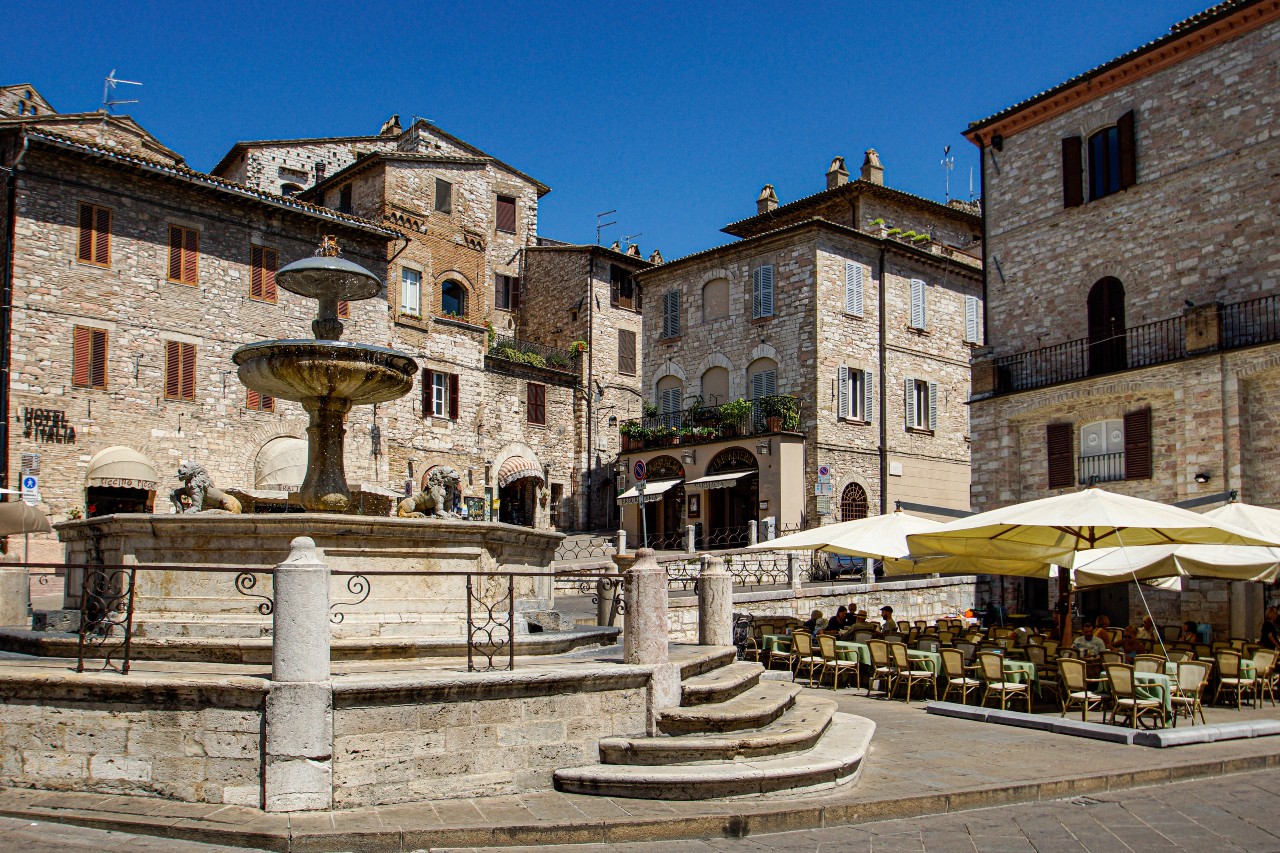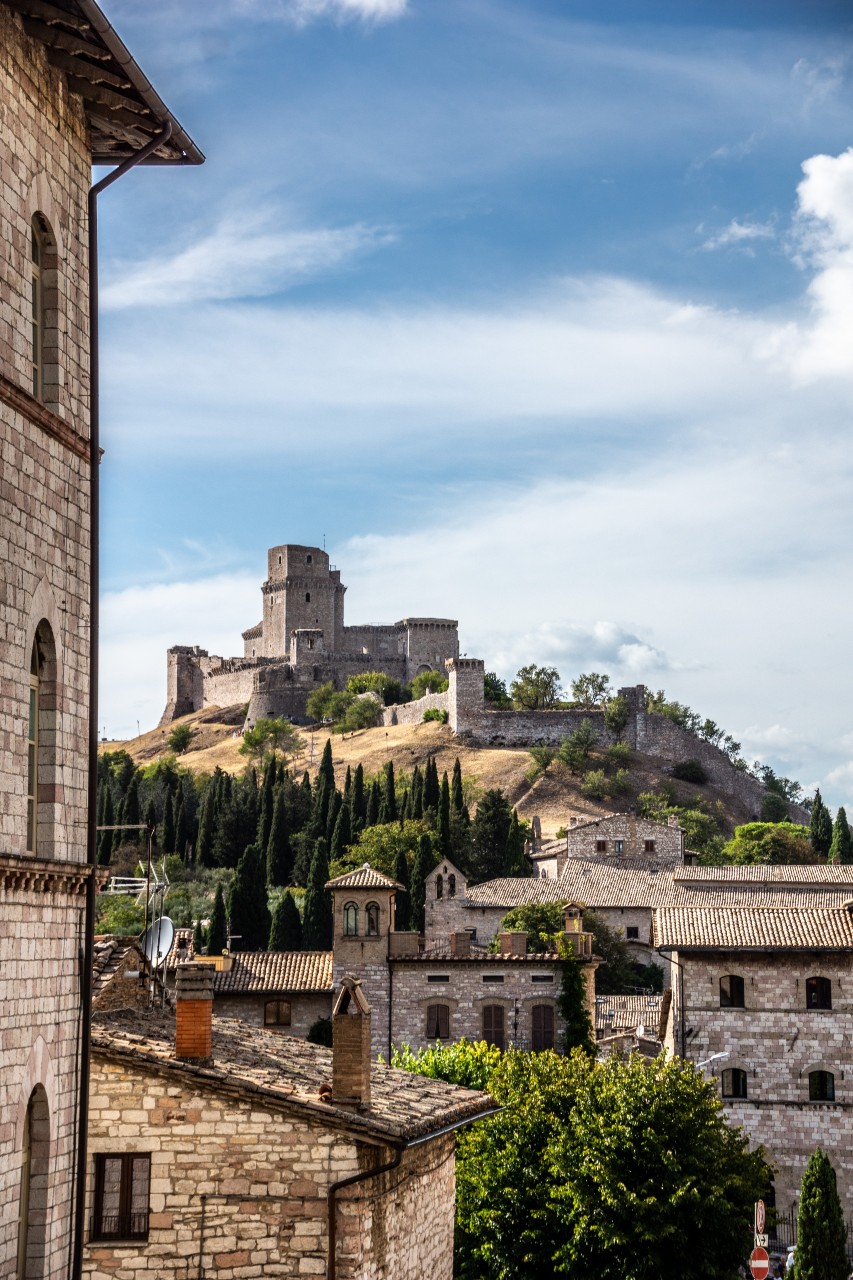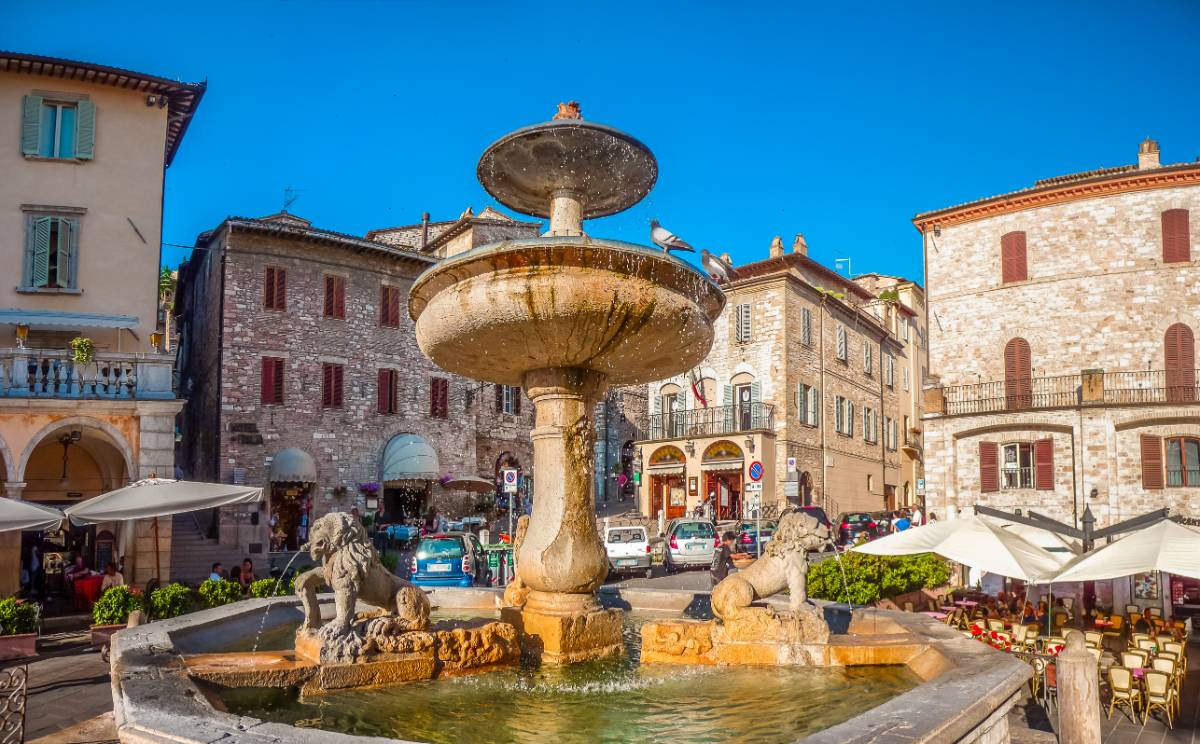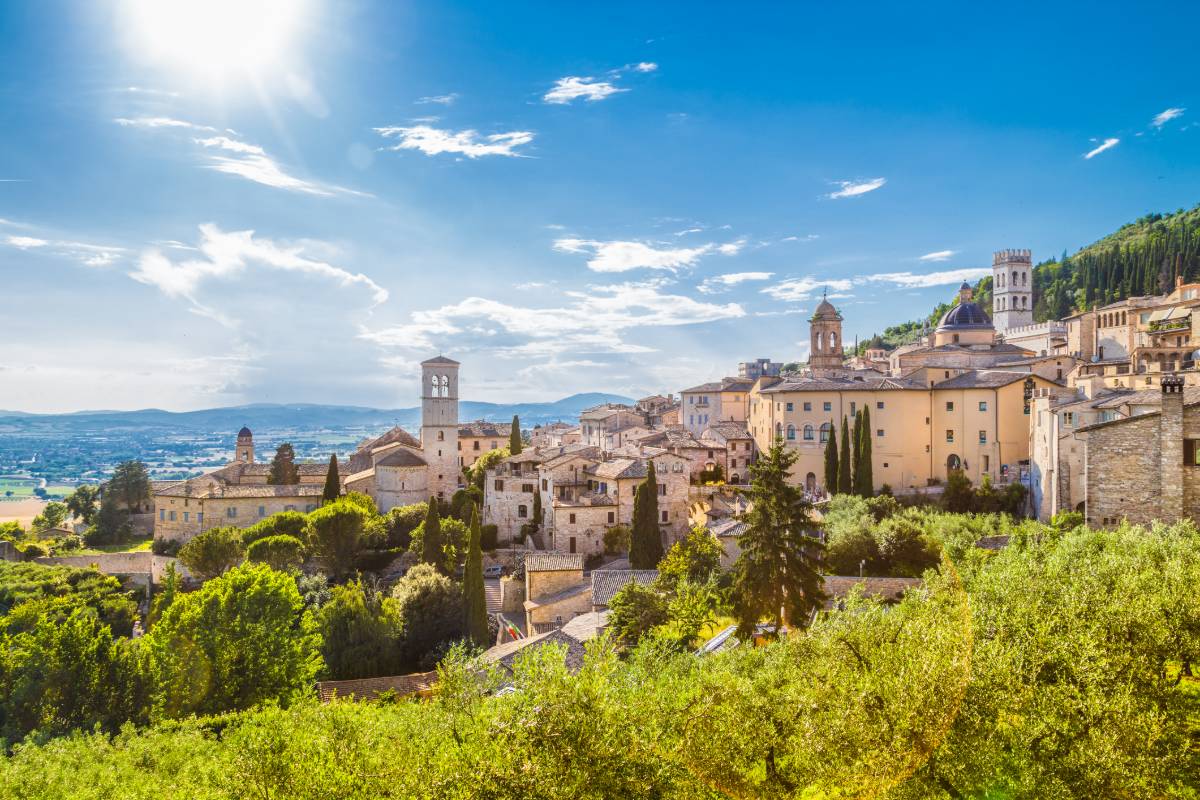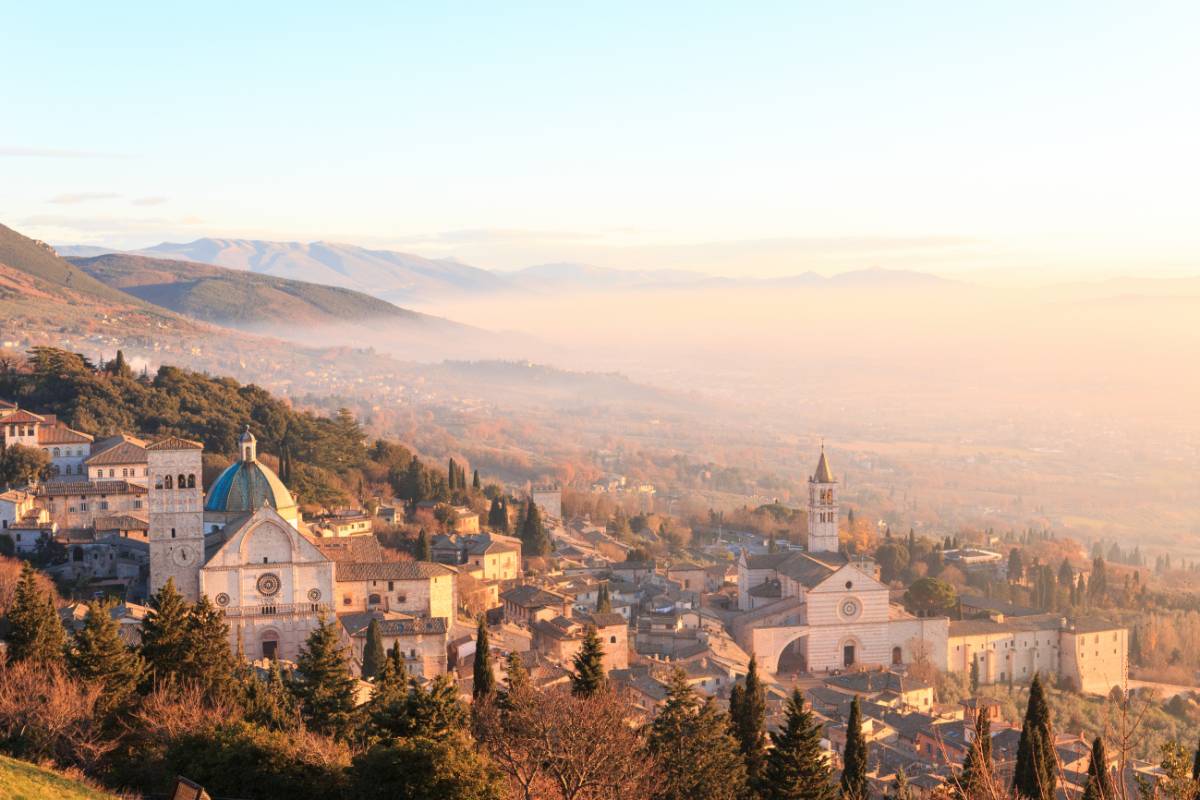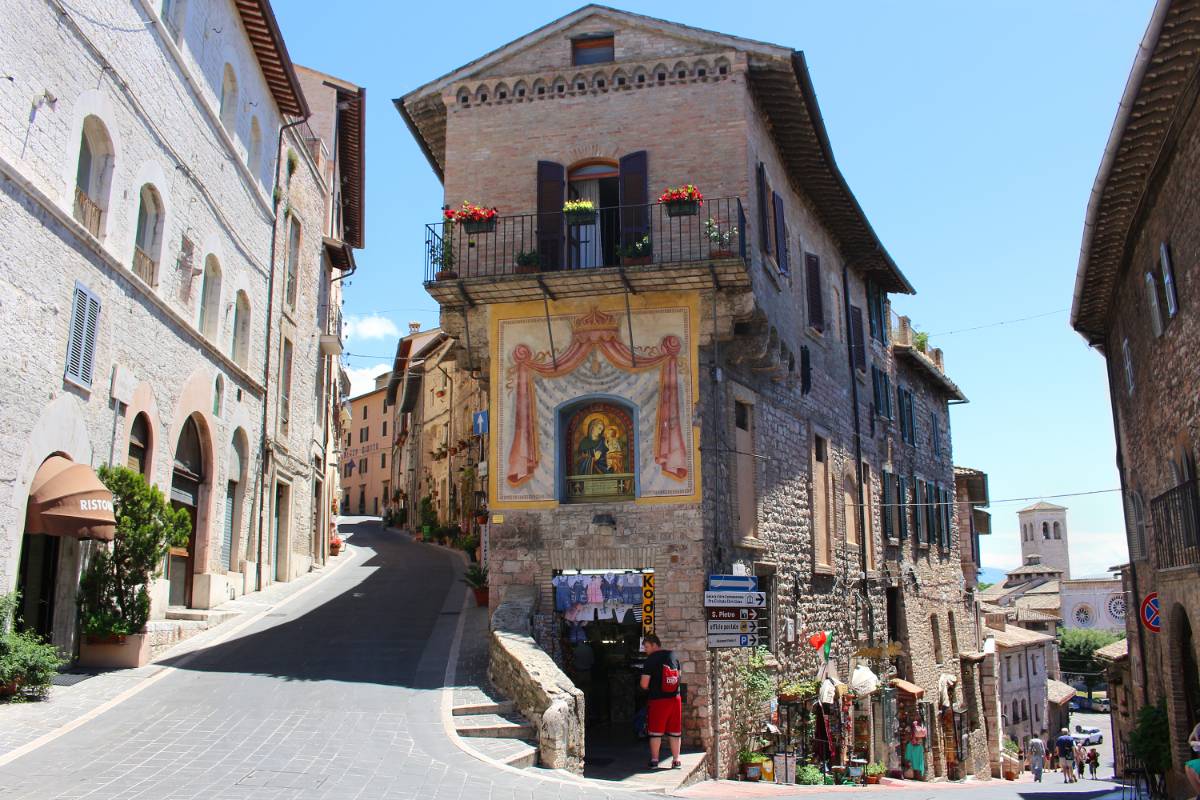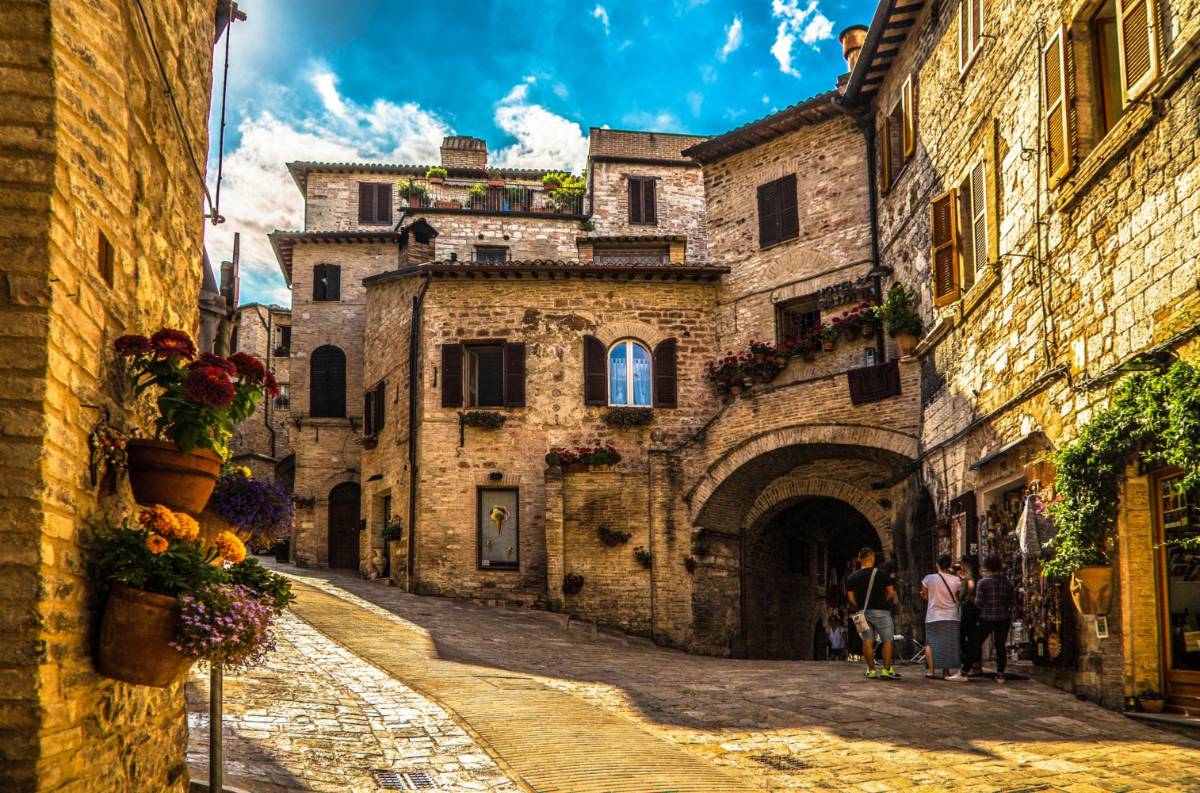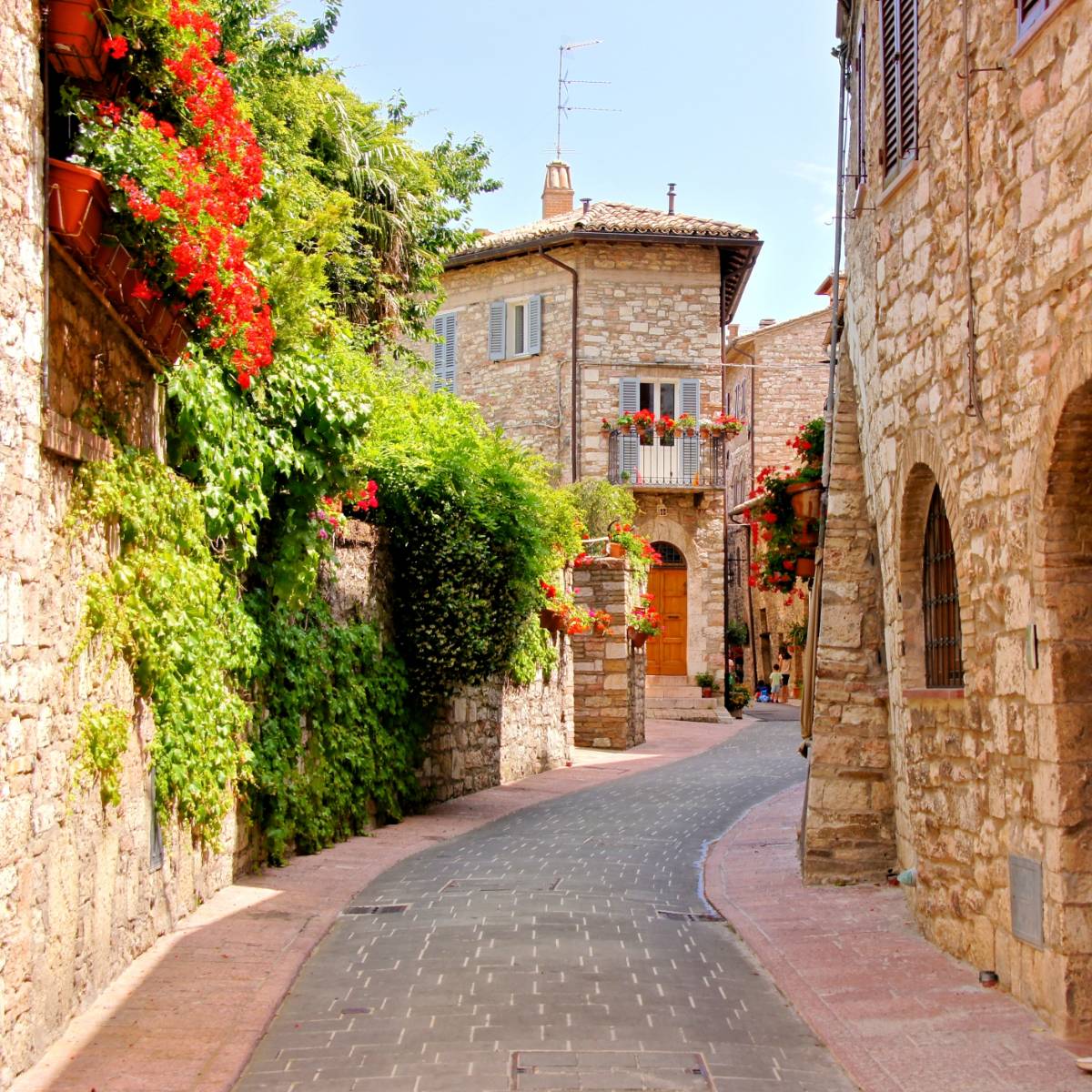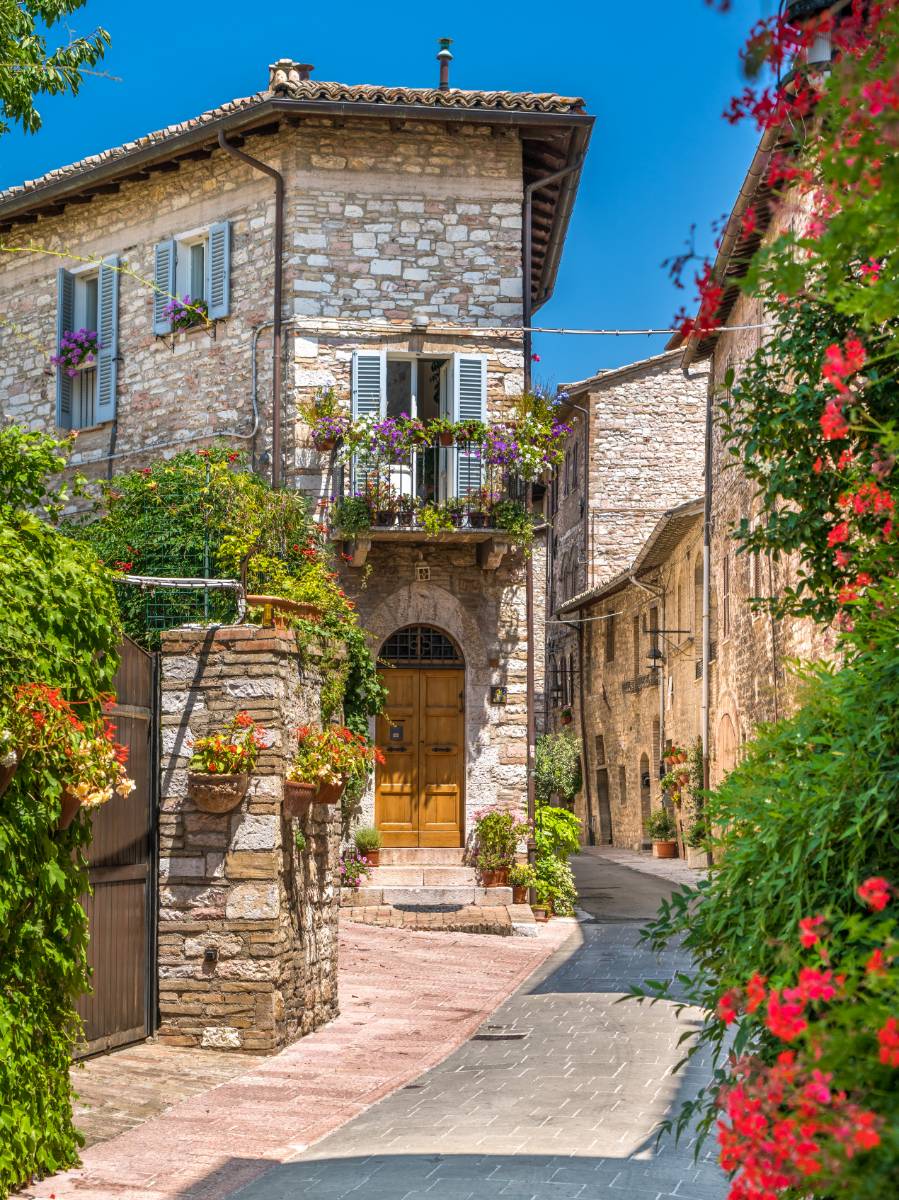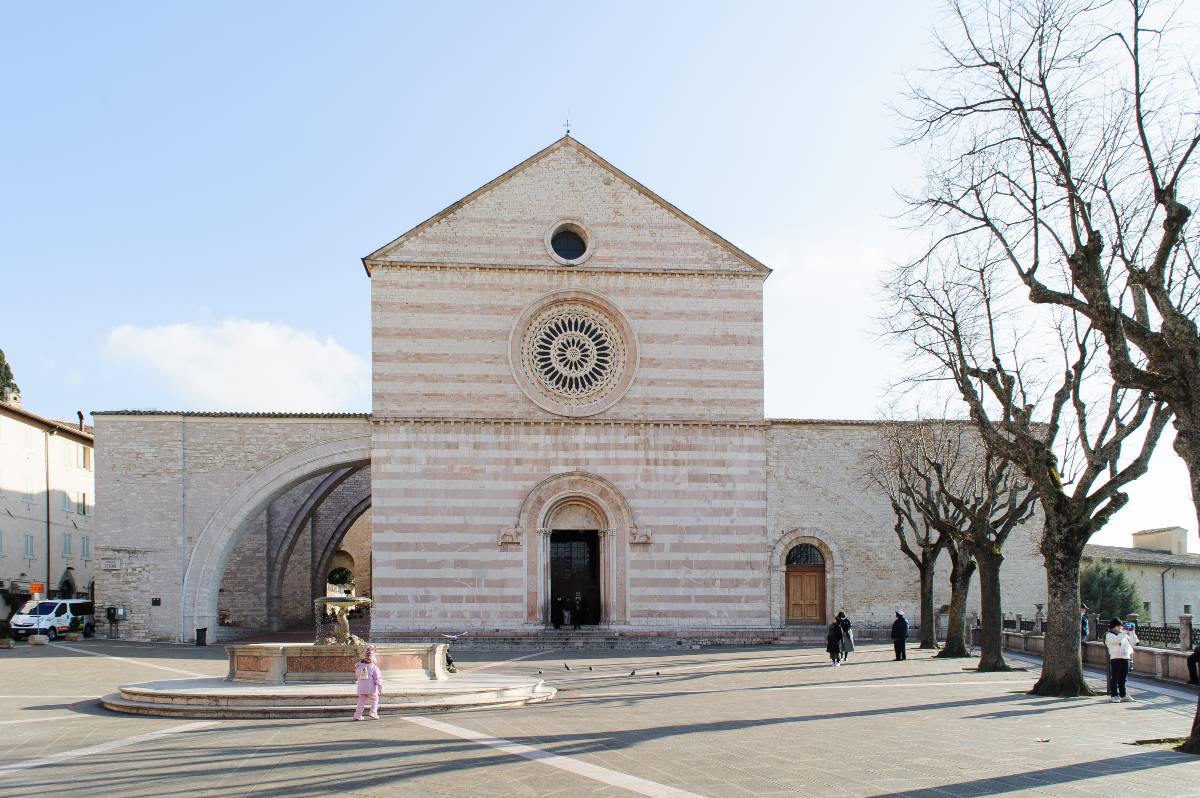There are many spiritual places to see in Assisi, the town itself is easy to visit on foot and is a beautiful medieval village that has always remained intact. The works of art are numerous, almost all in honor of St. Francis, with wonderfully frescoed and decorated places of worship.
The village harmonizes on a hill from which dominates the majestic convent built in the 13th century to the design of the follower of St. Francis Brother Elias. It is impossible not to visit it if you are in these parts. Recently restored after the terrible earthquake of 1997, it is now back in its heyday.
The upper church in Gothic style presents the famous panels decorated by Giotto and other painters of the time with subjects from the life of St. Francis. The lower basilica of Romanesque origin with the addition of Gothic elements was built to contain the crypt of St. Francis. The reliefs on the portal of the lower temple depict scenes from the life of Saints Clare and Francis.
Assisi and St. Francis
Although the main attraction of Assisi, this basilica is certainly not the only one. The Cathedral, built in the 8th century and rebuilt in the 12th century with the addition of a magnificent bell tower, is well worth a visit.
Of great interest is the church of Santa Chiara where the companion of St. Francis, who founded the female order of Franciscan nuns, is buried. Thinking about St. Francis, one cannot avoid talking about the church of San Damiano, to which a convent is annexed and the famous basilica of Santa Maria degli Angeli with the chapel of the Porziuncola, the Saint's place of prayer.
In the area there are many castles such as the Rocca Maggiore, certainly the most famous of all. It rises on the top of a hill at 500 meters above sea level and from the terraces you can admire a beautiful panorama of the whole Perugina plain. This building was erected in the second half of the 12th century by Federico Barbarossa and was devastated in 1198 by a popular uprising. After having been restored in 1367, various feudal masters took turns on the site, expanding it and keeping it efficient. Churches, castles, fortresses, medieval alleys, Assisi is all this but not only. Being a tourist city there is no lack of reception facilities for visitors of all ages.
Curiosity
Assisi is a tourist area and has a rich calendar of events throughout the year. It starts at Christmas, with the medieval living nativity scene in all the historical centres of the area. The month of January in Santa Maria degli Angeli celebrates the feast of the dish of St. Anthony the Abbot, with the Befana in the square and, afterwards, thematic festivals throughout the country. Afterwards it is carnival time, with parades of floats for adults and children. From 30 September to 5 October the feast of St. Francis is honoured with a rich cultural and religious programme. In summer in Assisi it is time for a festival of sacred and modern music, with concerts in the square and indoor. At the end of August in Santa Maria degli Angeli there is the food and wine festival Food Truck.
In Assisi you can eat well and there are starred restaurants throughout the village. Trattorias, pizzerias, bars and clubs for young and old that will make you spend unforgettable moments in the midst of this beautiful and ancient nature.
The calendar of events organized in the city of Assisi is very long and varied, especially in summer. Many musicians take turns in the squares and theatres of the village, performing for free or for a fee for tourists who flock to the city during the summer season. The territory of the area includes various flat, hilly and mountainous landscapes, so in winter it is not difficult that there is snow.
Spring is the best season to visit Assisi, but even at the end of the summer season you can find many interesting events to have the excuse to come to this wonderful spiritual but also worldly city. In particular the theatre season is very active, which offers shows and concerts throughout the year. Of course at Christmas the whole village is transformed in honour of the birth of Jesus. The surroundings of Assisi are equally interesting, in line with the characteristic landscape of the Umbrian hills. Short stretches separate from ancient villages where there is no lack of events for families, couples and groups of friends.
Historical notes
Assisi is a village in the province of Perugia linked for centuries to the figure of St. Francis. The Umbrian city has ancient origins and has remained uncontaminated since the times when it was a fortified place protected by a happy natural position.
Assisi was founded by the Umbrians, Italic people settled on the left bank of the Tiber, who tried to build cities in places protected by the conformation of the territory. There is little news of the pre-Roman period, but surely the Etruscans occupied the whole area of Perugia and the lands on the right bank of the Tiber.
Assisi became a Roman colony and became the seat of preachers, like Bishop Ruffino, martyred in 238. The town was invaded by barbarians after the fall of the Western Empire and was part of the Duchy of Spoleto during the period when it built the famous fortress. During the Middle Ages it rivalled Perugia in the wars between the Ghibellines, Assisi, and the Guelphs, the Perugia people. After having passed under the power of several families, it entered under the protection of the State of the Church until 1860 when it was admitted to the Kingdom of Italy.


